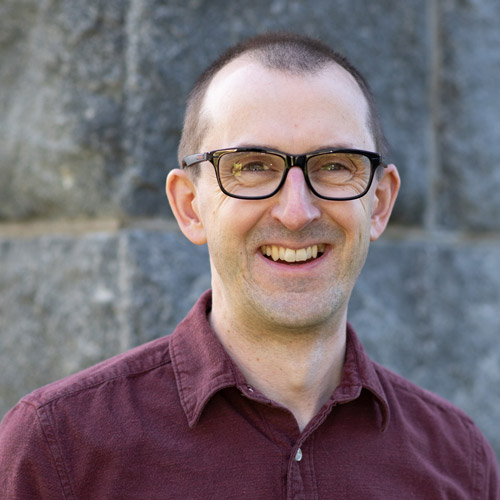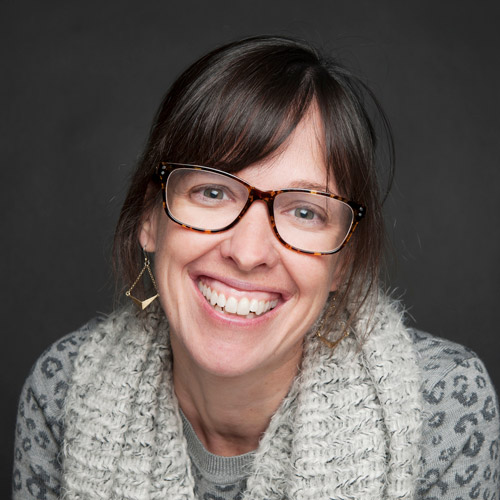BU’s Innovator of the Year Has Pioneered Devices to Advance Astronomy, Microscopy, Eye Exams
Photonics Center Director Thomas Bifano recognized for helping others nurture their ideas and for “always trying to solve problems”

Thomas Bifano, an ENG professor of mechanical engineering, is the cofounder of Boston Micromachines Corporation, a company specializing in deformable mirrors that he spun out of his BU lab 25 years ago.
BU’s Innovator of the Year Has Pioneered Devices to Advance Astronomy, Microscopy, Eye Exams
Photonics Center Director Thomas Bifano recognized for helping others nurture their ideas and for “always trying to solve problems”
The light from the stars filling the sky travels mind-boggling distances to reach us: the nearest star, beyond our own, is about 25 trillion miles from Earth. For most of its journey to our planet, that light is undisturbed, flying parallel and unimpeded through the vacuum of space. But then, in the very last microseconds, our atmosphere gets in the way, and the light bends.
If you’re looking through a telescope, “the result is that the image is blurry, because not all of the light is getting to the right focus,” says Boston University mechanical engineer Thomas Bifano.
For astronomers studying distant stars, blurry just won’t cut it.
But Bifano created a solution: a mirror that can shift its surface as quickly as every millisecond to compensate for the atmosphere’s fluctuating effect, pulling the image into focus. It’s a technology, called MEMS (micro-electro-mechanical systems) deformable mirrors, that he’s also used to improve eye exams, satellite communications, and imaging research—and that has now helped earn Bifano BU’s Innovator of the Year award.
The director of the University’s cross-disciplinary Photonics Center, Bifano is the 14th winner of the award, given to an “outstanding faculty member who has translated world-class research into an invention or innovation that benefits humankind.” A holder of 10 patents, he’s also chief technology officer of Boston Micromachines Corporation, a company he cofounded to develop and market deformable mirrors and other optics products.
“I’m deeply, deeply honored by the award,” says Bifano, a BU College of Engineering professor of mechanical engineering. “But I’m also aware that my advocacy for others is partly responsible for why I’ve been chosen.”
As head of the Photonics Center—which is a hub for the study of light and development of technologies utilizing it—Bifano has helped many others nurture their own innovations. The center is home to 70 faculty research labs and the Business Innovation Center, which hosts tech, biotech, manufacturing, and medical devices start-ups and corporations.
“Tom’s leadership at Boston Micromachines, where he solves real optics problems, and his role in connecting innovative research groups across the University via the Photonics Center, demonstrate his ability to think creatively and foster interdisciplinary collaboration,” says biotech entrepreneur David Freedman (ENG’10), whose first company, NanoView Biosciences, was incubated and funded through the Photonics Center. Freedman is now back on campus, using the Business Innovation Center to cultivate his latest start-up, Everest Biolabs.
“Tom’s ability to balance risk-taking with practicality and his commitment to fostering innovation make him a role model for success,” he says. “He has his own innovative track record, but also creates an ecosystem of innovation.”
Playing, Discovering, Failing, Solving
Before Bifano’s MEMS deformable mirrors, existing peer technologies for bending light were big, expensive, and drained lots of power. That meant they were mostly only viable in large instruments—think a hulking telescope in a desert rather than a small microscope in a lab. His innovation was leveraging microfabrication techniques used for making microscopic objects—like inkjet printer nozzles—to develop tiny mirrors moved by electrostatic actuators. By creating deformable mirrors that were smaller, faster, cheaper, and more efficient, Bifano vastly opened up their range of applications.
He spun Boston Micromachines out of his lab in 1999 and says the company hitting its quarter of a century mark is gratifying—and not just because of the impact its technologies have had on astronomy, healthcare, and more.
“I’ve watched the employees there grow and raise their children, put them through college,” says Bifano. “And the reason they’ve been able to do all those things, to have lives that are meaningful and useful, is a direct result of the innovations that we made here at BU.”
One of those who has been at Boston Micromachines from the start is Paul Bierden, its president and CEO. A former student in Bifano’s lab, Bierden (ENG’92,’94) helped him found the company.
“I have known Tom since I was 18 years old. He has been a teacher, a mentor, a business partner, and a friend,” says Bierden. “He is a true engineer, which in my opinion, is that he is always trying to solve problems.
“Tom has always instilled in me to not be afraid to try something new. Dive into a problem, break things, flip switches, turn knobs, learn from your mistakes, and try again.”
Those lessons in innovation are ones Bifano continues to share today, encouraging students to roll with the failures, to keep playing and discovering—but to also focus on the end goal.
“I tell my students early on—and the ones who grasp it do much better than the ones who don’t—that you need to own the problems you’re working on,” he says. “You’re not working on it because somebody assigned it to you, you own it, it’s yours. The motivation is not to satisfy me or your doctoral committee, it’s to knock down the problem.
“You’re not really a good engineer unless the things you do turn into helpful benefits for society.”


Comments & Discussion
Boston University moderates comments to facilitate an informed, substantive, civil conversation. Abusive, profane, self-promotional, misleading, incoherent or off-topic comments will be rejected. Moderators are staffed during regular business hours (EST) and can only accept comments written in English. Statistics or facts must include a citation or a link to the citation.